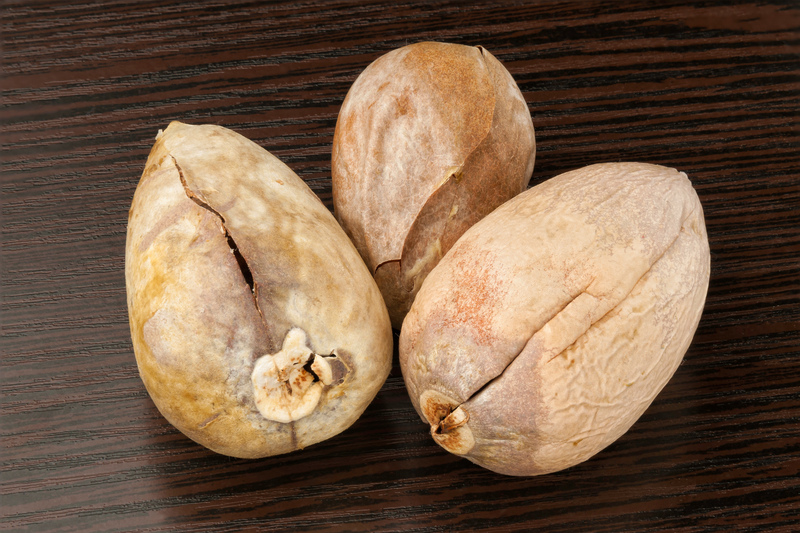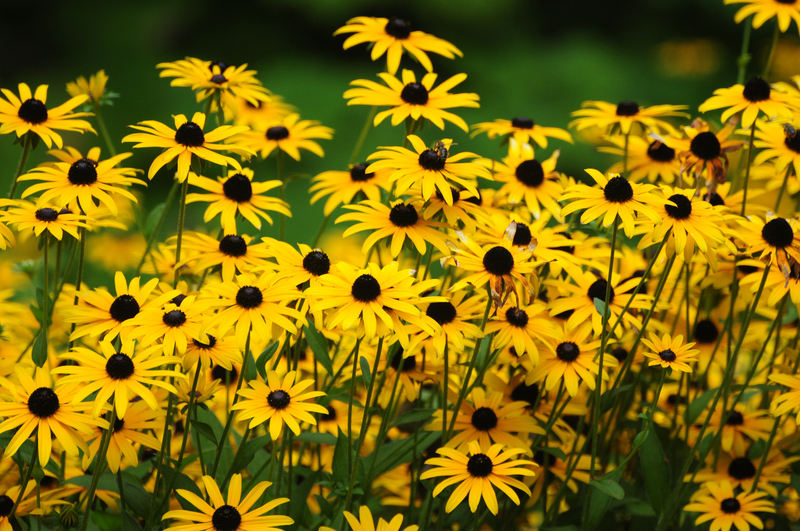Ultimate Guide to Defending Your Grass Against Summer Drought Damage
When the heat of summer bears down and rainfall becomes scarce, your once-lush lawn can quickly become a brittle, brown patchwork. Drought conditions are hard on grass, but with the right care, knowledge, and action, summer drought damage doesn't have to spell disaster for your yard. This comprehensive guide will walk you through how to protect your grass from drought, revive damaged lawns, and ensure your turf remains the envy of the neighborhood, even in the dog days of summer.
Understanding the Impact of Summer Drought on Grass
Drought stress can occur when your grass experiences extended periods without adequate rainfall or irrigation. During this time, high temperatures and increased evaporation further exacerbate water scarcity. Different grass types react in unique ways:
- Cool-season grasses (such as fescue, ryegrass, and bluegrass) are particularly sensitive, entering dormancy quicker under drought conditions.
- Warm-season grasses (like Bermuda, Zoysia, and St. Augustine) are more drought-tolerant but can still suffer under prolonged dry spells.
Common signs of drought damage in lawns include:
- Wilting or curled leaf blades
- Grass turning a dull green, yellow, or straw-brown color
- Footprints remaining visible after walking on the lawn
- Soil that feels dry and hard to the touch

Key Strategies to Defend Your Lawn Against Drought
1. Choosing the Right Grass Varieties
If you're planning, start by selecting grasses known for drought resistance. Some options include:
- Bermuda grass
- Zoysia grass
- Buffalograss
- Tall fescue (best among cool-season species)
Planting a blend of grasses can also increase your lawn's resilience, as various species recover differently after drought periods.
2. Watering Wisely During Droughts
Proper watering is the cornerstone of defending your grass against summer drought damage. Here are essential tips for efficient water management:
- Water deeply and infrequently. Aim for 1 to 1.5 inches per week, delivered all at once, to encourage deep root growth.
- Irrigate early in the morning (between 4 a.m. and 9 a.m.) to minimize evaporation loss.
- Avoid watering during the hottest part of the day, as most water will evaporate before reaching the roots.
- Use soaker hoses or drip irrigation on beds and edges for maximum efficiency.
- Fix leaks or broken sprinkler heads to ensure all areas receive even coverage.
Bonus Tip: Place an empty tuna can on your lawn when watering. Once it's full (about 1 inch), you've delivered enough water for a deep soak.
3. Smart Mowing Techniques for Drought Protection
Mowing can either help or harm your lawn during periods of drought. Follow these guidelines for optimal results:
- Raise the mower blade height. Cutting grass taller (3-4 inches for most species) reduces stress, shades soil, and promotes deeper root growth.
- Never remove more than ⅓ of the grass blade at a time. This avoids shocking the plant and helps retain moisture.
- Leave grass clippings on the lawn. Mulching returns nutrients and organic matter, helping retain moisture and insulate the soil.
- Sharpen your mower blades regularly. Dull blades tear grass, making it more susceptible to drought damage and disease.
4. Fertilizing with Care
Be cautious with fertilizer during drought. Over-fertilizing or applying at the wrong time can burn your lawn. Observe these principles:
- Avoid fertilizing during severe drought or extreme heat. Wait until cooler weather and after rain, when the grass is actively growing.
- Opt for slow-release or organic fertilizers in spring and early fall for cool-season grasses, or late spring for warm-season types.
- Topdress with compost to boost soil's water retention and microbial activity.
5. Improving Soil Health
Healthy soil helps your grass withstand drought stress by storing moisture and supporting robust root systems. You can build better soil by:
- Aerating your lawn each year in spring or fall, which relieves compaction and encourages deeper root growth.
- Adding organic matter (compost or well-rotted manure) to boost water-holding capacity.
- Using mulch around flower beds and borders to shield soil from intense summer sun.
6. Mulching and Shading Techniques
While mulching is well-known for flower beds, organic mulches like shredded leaves, pine needles, or grass clippings can be used in thin layers on your lawn during high-stress periods. For newly seeded or patchy areas, consider temporary shading or floating row covers during the hottest days.
7. Managing Lawn Traffic and Stress
- Limit foot traffic. Avoid walking or mowing drought-stressed lawns, as grass blades can crack and crown tissue can be damaged.
- Redirect pets and children to less sensitive areas during peak drought periods.
How to Revive Grass After Drought Has Hit
If your lawn has already suffered from drought damage, don't panic. With time and proper care, even a brown lawn can bounce back. Here's how to restore your lawn after drought:
1. Assess the Damage
Check whether the grass is dead or dormant. Most grass species survive drought by going dormant--they'll turn brown but revive with rainfall. Try pulling on the grass:
- If roots remain intact and you see green at the base, your grass is likely dormant and will recover.
- If the roots are dry, brittle, and pull out easily, you'll need to reseed or overseed the area.
2. Water Gradually
When rewatering after a drought, avoid flooding the soil. Instead, water lightly at first, then gradually increase:
- Apply 1/2 -inch every three days until the turf begins to green up.
- Return to the deep, infrequent watering schedule as new growth appears.
3. Reseed or Overseed Damaged Areas
If portions of your lawn have not recovered after 2-3 weeks of proper watering, overseed with a drought-tolerant mix in early fall or late summer. Prepare the soil by raking and apply seed, then keep the area moist until germination.
4. Fertilize with Care
Once grass is green and actively growing, apply a gentle, slow-release fertilizer or a compost topdressing to provide nutrients and encourage recovery.
5. Continue Best Practices
- Maintain high mowing blades
- Leave clippings on the lawn as mulch
- Avoid heavy traffic until full recovery
- Monitor for pests or disease, which can take advantage of drought-weakened lawns
Preventing Summer Drought Damage Next Year
Prevention is the best defense against summer drought damage to grass. Early preparation and ongoing yard care will fortify your lawn, making it more resilient when dry weather returns:
- Begin soil improvement early--add compost, aerate, and test your soil for pH and nutrients in spring.
- Transition to drought-tolerant grasses as necessary.
- Install efficient irrigation systems like smart controllers, drip lines, and rain sensors.
- Adjust mowing and watering routines before the hottest months arrive.
- Mulch or plant groundcovers in difficult spots that struggle in extreme heat.

Frequently Asked Questions About Defending Grass from Drought
How long can grass survive without water in summer?
Most healthy, established grass can survive 3-4 weeks without water by going dormant. Cool-season grasses are more sensitive and may brown sooner, while warm-season types last longer.
Should I water my lawn during a drought?
If local water restrictions allow, deep, infrequent watering will help defend your lawn against drought damage. Prioritize watering trees, shrubs, and high-value lawn areas.
Is brown grass dead or just dormant?
Brown grass during summer drought is usually dormant, not dead. With proper care and increased moisture, most lawns recover once favorable conditions return.
What if I can't water because of restrictions?
Raise your mowing height, limit foot traffic, and avoid fertilizing or heavy lawn use. Focus on helping your grass survive until autumn brings relief.
Can I use "drought-proof" products on my lawn?
Some soil wetting agents and hydrogels claim to reduce watering needs. These products can help, but are not substitutes for sound lawn care and the right grass varieties.
Conclusion: Your Action Plan for a Resilient, Drought-Tolerant Lawn
With hotter, drier summers becoming more common, defending your grass against summer drought damage is essential for any homeowner who takes pride in their yard. By choosing resilient grass types, watering wisely, mowing high, nurturing your soil, and employing good lawn habits, you can maintain a thick, healthy lawn--even in challenging weather.
Remember: The key isn't to fight nature, but to work with it. Adapt your lawn care routines, prepare in advance, and your grass will emerge from any drought greener and stronger than ever before.
Ready to get started? Bookmark this Ultimate Guide to Defending Your Grass Against Summer Drought Damage to help your lawn stay vibrant all summer long!